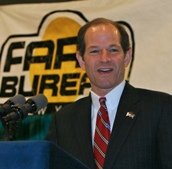 In a new interview with Network World, Jim Bound, Chair of the North American IPv6 Task Force, talks about the status of IPv6 adoption in the United States. A federal mandate – that agencies switch to an IPv6 backbone by June 2008 – looms.
In a new interview with Network World, Jim Bound, Chair of the North American IPv6 Task Force, talks about the status of IPv6 adoption in the United States. A federal mandate – that agencies switch to an IPv6 backbone by June 2008 – looms.
Jim notes that the current IPv4 address space will be exhausted by 2010, give or take a year. He predicts a last minute stampede. Continue reading

 The Computer History Museum has inaugurated a
The Computer History Museum has inaugurated a 
 Not deploying IPv6 threatens Internet, Lynn St. Amour warns
Not deploying IPv6 threatens Internet, Lynn St. Amour warns
 Verizon
Verizon